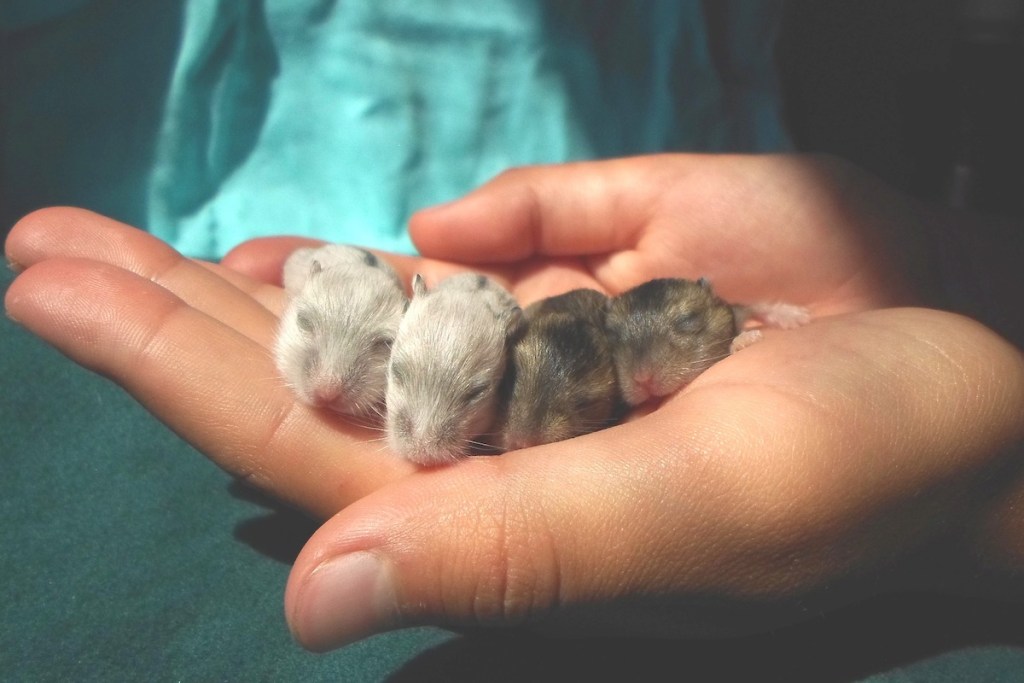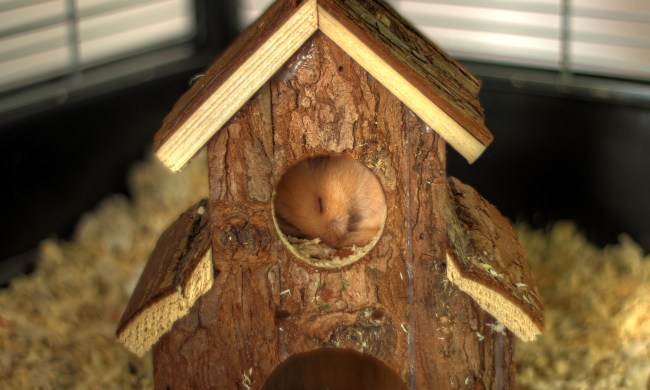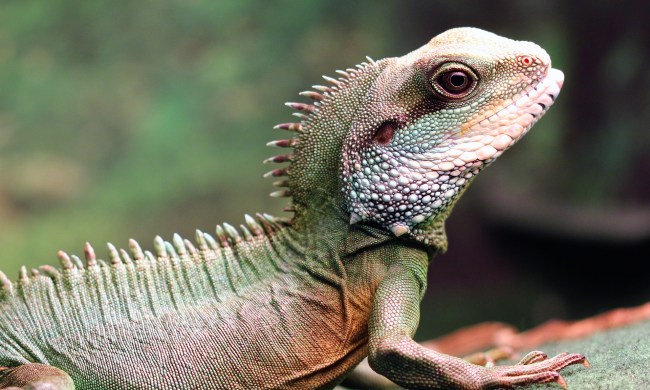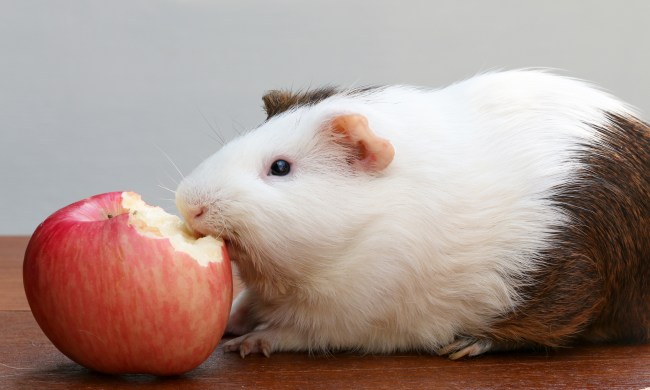Hamsters can make the cutest and cuddliest pets. They aren’t born that way, though; getting them there requires a bit of work. To make your new rodent people-friendly, you will need to put in the time to acclimate her to you and other humans. But don’t worry — it’s fun. Teaching your hamster not to bite mostly involves playing with and petting your animal as a baby. To help your pet learn how to behave, though, you need to know why she gets mouthy in the first place.

Why do hamsters bite?
Because they’re scared. That’s usually it. Most hamsters aren’t out to get you or naturally hyperaggressive. But they do frighten easily. After all, you’re about 300 times bigger than they are. It’ll take a while for your new hamster to adjust to you and her new home. Take this process slowly and carefully to get her used to you without getting a chomp. Here’s how to train a hamster not to bite.
Begin when they’re young
It’s a lot easier to teach a young hamster new tricks — and good habits. Small pets that don’t get exposed to people from an early age struggle to adapt to you later in life, which can lead to nips. By handling your pet when she’s little, you ensure that she thinks of you as comforting and safe. But you can’t play with her frequently during her youth and then take her out only occasionally. It’s important to pet and play with her daily. A long spell alone in her cage could lead to bad habits, and she might become a biter.

Choose the right time and place
Hamsters like to stay up at night, so try to squeeze in training and playtime when she looks wide awake and ready to absorb knowledge. Avoid mornings since that’s her bedtime, and you’ll find a sleepy, grumpy hamster that just wants to catch z’s. Keep the time and place as consistent as possible. If you play with her on the couch, take her there every day for pets until she gets used to you.
Start small
You should begin just by standing close to the cage. She needs to get used to your sound, smell, and feel. Go ahead and talk to her even though she won’t really understand what you say. It helps get her accustomed to everything, including the noise you and your family make, but use your gentlest voice at first. Both of you should master this level before progressing to holding her. Look for signs that she has conquered her fear, like coming closer to you or not trying to hide.
Take baby steps
If you must pick her up before you have bonded, you’ll want to put on gloves. However, avoid them as much as possible since she needs to sniff you out to see who you are. Let her come to you, and don’t push her into closeness before she feels ready. Once she approaches regularly, then you can begin to pet her and finally pick her up. Do not expect to go through all the steps in a night — it’ll take time to become friends. You may also need to go through a few of these steps with other family members, too, even after she loves you.
Give her lots of treats
Nothing will endear you to your new pet better than her favorite snack. Fresh fruit and veggies should suffice, but some hamsters also enjoy hay and commercial treats. While you can’t give her too many, as it will upset her tummy, a small treat when she finally lets you pet her goes a long way to keeping her close.
Even the tamest pet might bite after a sudden movement, so always handle your animal with care. Don’t correct your hamster with negative feedback, though you should stop playing with her if she nips since that means she is asking for a break. Of course, everyone acts out when they are bored. Fill up her cage with lots of toys, including a hamster wheel, to keep her entertained and happy. If you see your pet biting other things, like her cage, that means she doesn’t have enough chew toys. Lastly, if she’s biting herself, take her to the vet for a once-over. Really, the secret here is play! Once she’s comfortable with you, you won’t have to worry about hamster bites.



